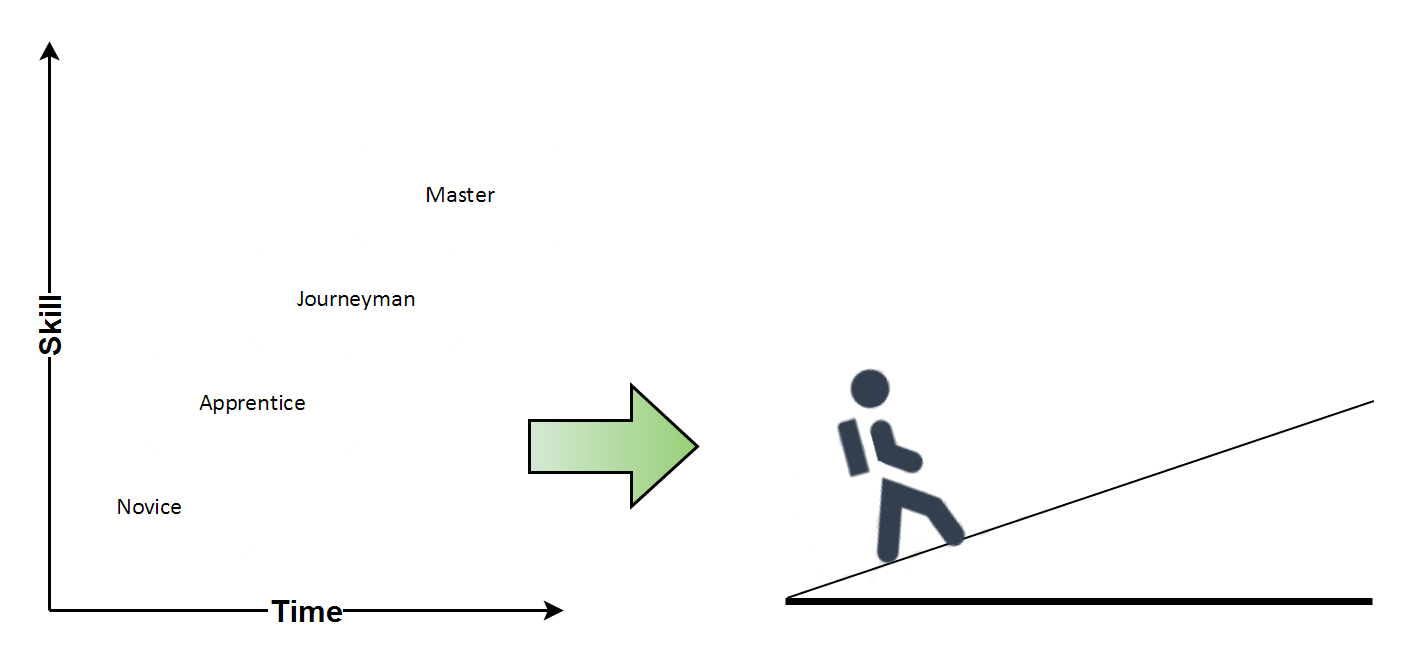In an earlier post, I talked about using performance appraisals as a tool to have a personalised, growth-focussed conversation with people about their careers within the context of your organisation’s business operating environment.
It is important to ensure that these conversation are well grounded in the opportunities available and the established career paths you have set up for your teams.
One of the ways I have done this is by adapting the Craftsman Model for Career Management to create a tool that I call Syed’s Slope of Expectations:
It essentially takes the stages along the craftsman journey and plots them on a linear slope, outlining the path one needs to follow to move forward in their career. Remember that this is a model, so it necessarily (over)simplifies things to allow focus on a particular area of analysis.
One of the reasons this works well is that it easy to understand. Everyone gets the metaphor, and it doesn’t require lots of planning or documentation to start using it. You can go out for a coffee and use it to have a casual chat while waiting in in queue for your slightly hot organic weak decaf skim soy caramel latte with extra froth.
How it works
Basically, it can be used to have conversations with individuals and explore one or more of the following:
- Where on the slope they currently are.
- Have they moved on the slope?
- Which direction they’re moving in (or standing still).
- Why do they feel they’re moving in that direction?
- What needs to happen to keep moving forward (or stop sliding back)?
- Is this still the right slope from the last time we spoke?
- If this is the wrong slope, how do we get them to the right one?
This isn’t an exhaustive list. Use these as starting points and go from there. This is an analysis tool, so make sure you ask lots of open-ended and probing questions in a non-interrogative way.
Although it isn’t essential, it also helps to have some sort of career progression framework in place to refer to when having these conversations.
It’s all in the name
When I first called it “Syed’s Slope of Expectations”, it was deliberately meant to be a joke. Everyone chuckled when I first drew it up in a group-wide meeting and explained how it works. But the name has interesting connotations:
The expectations are mine
Potentially the more accurate name is “The Slope of Syed’s Expectations”, since I expect people to put in their best effort at work. If they don’t, then they let themselves, the rest of the team, and the organisation down, and I really want to understand why so I can help them get over it.
It’s an incline
Climbing up, by definition, is challenging. If someone isn’t being challenged, they’re not growing and getting better. Not a good thing. It’s understandable that everyone goes through periods where they just need to consolidate their skills or are going through a major life event outside work. Other than that, they really need to be ploughing ahead.
If you’re not going forward, you’re standing still or sliding down
I really like it when someone identifies themselves in this situation. It requires a keen sense of awareness and contextual understanding, and tells me that I need to invest more time to help this person out. We can explore why a person is feeling this way, whether their perception is just based on some short-term frustration or an actual issue, or how we can find ways to remove impediments from their path.
It’s really about communication
Communication is one of the foundational elements of great people management. Hopefully this tool helps improve yours as you move along your path to becoming a management and leadership master.
I’d love to hear if you use a similar concept, and what your experience with it has been.



Trackbacks/Pingbacks